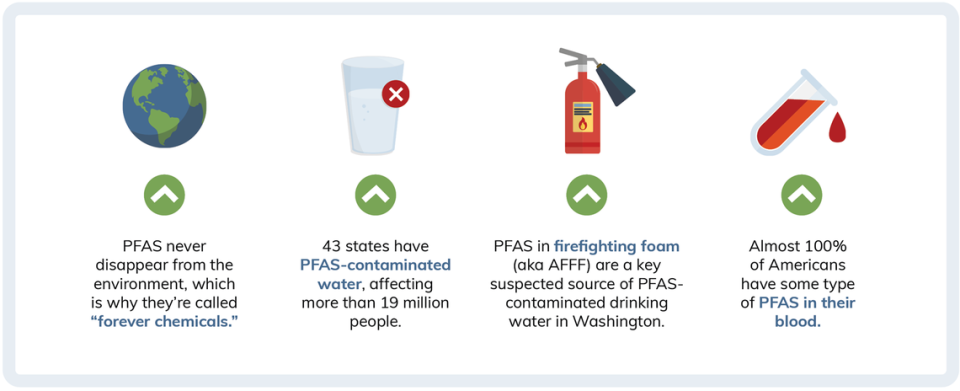Too much ‘forever’ chemicals found in Kennewick drinking water. It may be unsafe for some
The city of Kennewick is warning residents that certain “forever chemicals” have been found in its drinking water at levels that exceed state and new federal limits.
The Washington state Department of Health recommends that Kennewick city customers who are pregnant, breastfeeding or mixing infant formula with tap water consider using another source of water.
The chemicals were found in samples of Kennewick water collected March 12 as part of a four-times-a-year monitoring schedule.
With new federal limits set for PFAS a month later, the city expects to need to add infrastructure to fix the issue. That could raise water rates.
The amount of the PFAS found in Kennewick drinking water is equivalent to a little less than a drop in an Olympic-size swimming pool, the city points out.
The March samples exceeded the Washington state Board of Health limit for PFAS — per-and polyfluoroalkyl substances — which are a large group of human-made chemicals that never disappear from the environment.
The samples had perfluorooctane sulfonic acid, a type of PFAS, at 17.9 parts for trillion, exceeding the state’s action level of 15 parts for trillion.

Under new national regulations implemented for the first time on PFAS in April, the federal Environmental Protection Agency goal is to have no perfluorooctane sulfonic acid in drinking water.
It eventually could take enforcement action at 4 parts per trillion.
What are PFAS?
The Washington state Department of Health says that scientists are still studying how PFAS affect people’s health, with much of the information available from toxicity testing in laboratory animals.
But higher exposure over many years to the type of PFAS detected in Kennewick water is believed to pose a risk of problems with cholesterol, liver, thyroid, kidney or immune systems or to having babies with lower birthweights.
Almost all Americans have some type of PFAS in their blood, according to the Washington state Department of Ecology.

Children up to age 5 and people who are pregnant, planning to become pregnant or breastfeeding may be more vulnerable to health impacts from these chemicals, the Department of Health said.
Boiling water does not reduce PFAS. But some home water treatments are effective, including reverse osmosis or activated carbon filters certified to lower levels of PFAS.
Some bottled water also may contain PFAS. The Washington state Department of Health recommends looking for brands that have been purified with water filtration.
PFAS chemicals are tasteless, colorless and odorless. They build up in animals, fish, birds, plants and people, taking many years to leave people’s bodies, according to the Washington state Department of Health.
They are produced to make many products, including stain-resistant carpets and fabrics, nonstick pans, fast food wrappers, grease-proof food containers, waterproof clothing and a particular kind of firefighting foam.
PFAS in firefighting foam is a key suspected source of PFAS-contaminated drinking water in Washington, according to the state Department of Ecology.
Over many years of manufacturing and use, the chemicals have been released into the environment from industrial plants, fire training sites, consumer products and other sources, according to the city of Kennewick.
Once released, PFAS do not break down easily and last for a long time in the environment, it said.
Kennewick PFAS plan
The city of Kennewick collected samples at its Ranney Collector near the blue bridge in July 2022 in cooperation with the Washington state Department of Health. Some PFAS was detected then and again in early 2023 but they were below the Washington state limits.
However, the samples from the Ranney Collector in March were above the state limit, and those and some earlier samples exceeded the new EPA limits.

As the EPA released draft regulations for PFAS in March 2023 Kennewick contracted with RH2 Engineering to help find options to treat or eliminate PFAS from its Ranney Collector.
The city anticipates it will need to construct additional treatment infrastructure at the collector, with costs possibly passed on in city water bills because the expense was not planned.
Under the new EPA regulations, the city will need to collect results during the next three years on PFAS levels and before April 2029 will need improvements completed.

